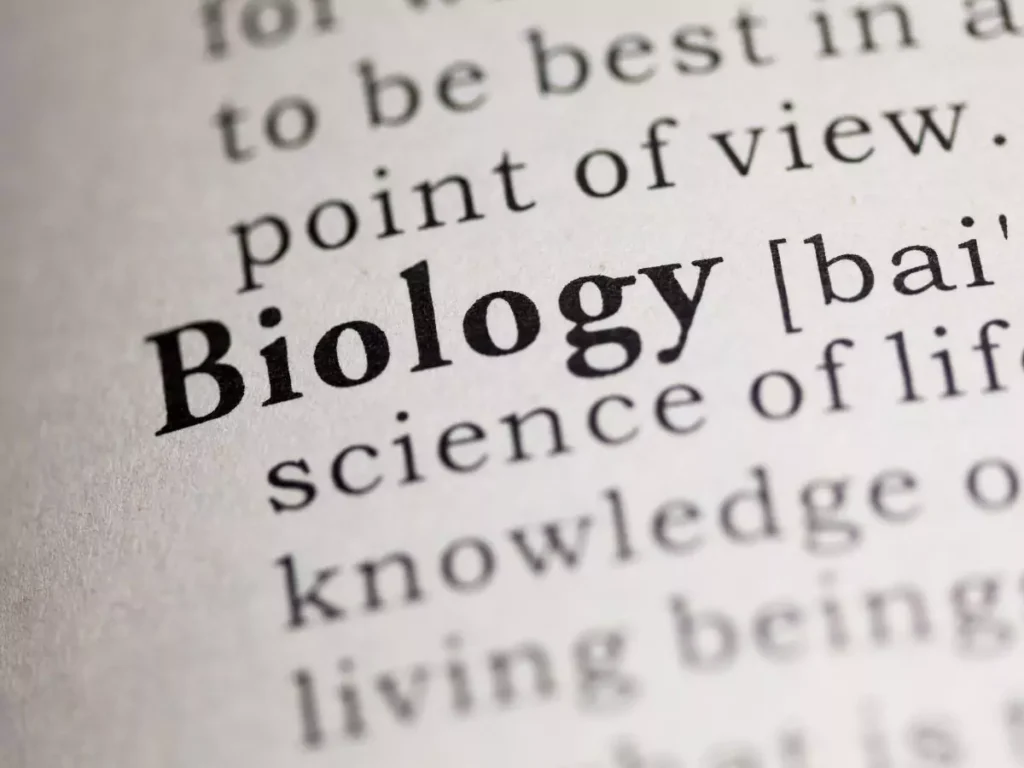
VITEEE Biology Syllabus

Kritika Yadav

Given below are some of the important point of VITEEE Biology Syllabus.
- Biology is an optional subject. Candidates who have opted for Mathematics do not need to study Biology.
- Candidates who will not be attempting questions from Mathematics need to answer questions from Biology.
- Total 40 questions will be asked from Biology.
- Each correct answer will be awarded 1 mark.
- There is no negative marking.
Read this article to know VITEEE Biology Syllabus 2022, biology topics wise weightage and popular books for VITEEE biology preparation.
VITEEE 2022 Biology Syllabus
Taxonomy
History and types of classification, Linnaean system of classification and Binomial nomenclature, status of bacteria and viruses, classification of angiosperms up to sub-class level (Bentham and Hooker’ systems), salient features of non-chordates up to phylum levels and chordates up to class levels.
Cell and molecular biology
Cell division: amitosis, mitosis and meiosis. Discovery of cell, the cell as a contained unit, pro and eukaryotic cells and its ultra structure. Cell wall, cell membrane and cell organelles (plastids, mitochondria, endoplasmic reticulum, Golgi bodies, ribosomes, lysosomes, vacuoles, and centrioles). DNA and RNA, DNA as genetic material, RNA as genetic material replication, transcription, genetic code, translation, gene expression and regulation, protein synthesis and DNA repair.
Evolution
Darwinism and neo-Darwinism, Lamarckism, Neo-Lamarckism, sources of variation, mutation, recombination, genetic drift, migration, natural selection. Modern concepts of organic evolution, evidence of organic evolution (fossil record and biochemical evidence). Origin and concepts of species: speciation and isolation (geographical pre-mating and post-mating or post zygotic), adaptive radiations.
Reproduction
Reproduction in Plants: asexual and sexual reproduction, vegetative propagation, sexual reproduction in flowering plants, structure of flowers, pollination , fertilization, development of seeds and fruits, apomixes and poly-embryony
Human reproduction and Reproductive health: reproductive system in male and female, menstrual cycles, production of gametes, fertilization, implantation, embryo development, pregnancy, parturition and lactation, Assisted reproductive technologies.
Genetics
Chromosomes: structure and types, linkage and crossing over, recombination of chromosomes, mutation, chromosomal aberration, Mendelian inheritance, chromosomal theory of inheritance, deviation from Mendelian ratio (gene interaction, incomplete dominance, co-dominance, complimentary gene, multiple allelism), sex determination in humans, chromosomal disorders in humans
Advanced biology
Plant and human genome projects, DNA fingerprinting and its applications, Bioinformatics and its applications, DNA sequencing and protein structure and biological databases.
Microbiology and immunology
Introduction to microbial diversity, history of medical microbiology, discovery of antibiotics, pasteurization, microscopes. Fungi, bacteria, virus, protozoa, algae – both beneficial and harmful. Parasites and pathogens. Structure of microbes and diseases caused by them. Microbes in households, food processing, industrial production of microbial products. Sewage treatment, waste management, and energy generation. Basic concepts of immunology: innate and humoral immunity, lymphoid organs, lymph nodes and spleen, antibodies, vaccines, transplantation immunology and immune system disorders.
Biochemistry
Structure and function of carbohydrates, lipids and proteins. Disaccharide, starch, glycogen, fats, cholesterol, amino acids and peptides. Primary, secondary and tertiary structure of proteins. Enzymes, structure and mechanism of enzyme catalysis, specificity of enzymes, co factors and co-enzymes.
Read: VITEEE application form
Physiology: human and plant
Human Physiology: digestion and absorption, breathing and respiration, body fluids and circulation, excretory system, endocrine system, nervous system, skeletal and muscular systems. Locomotion, movement, growth, aging and death. Hormones; types of hormones and their functions.
Plant Physiology: movement of water, food, nutrients, gases and minerals. Respiration, photosynthesis (light and dark reactions), factors affecting photosynthesis, electron transport chain (ETC), glycolysis, Kreb’s cycle, pentose phosphate pathway, hormones and growth regulators, Photo-periodism and vernalization.
Biotechnology and its applications
Micropropagation, protoplasmic fusions, single cell proteins, biotechnology products
in the animal sciences and dairy. Recombinant DNA technology, applications in health, agriculture and industries. Genetically modified organisms, bio-safety issues, insulin and Bt cotton, transgenic plants and microbes, plant tissue culture and its application.
Read: VITEEE Physics Syllabus
Applied biology and human welfare
Population and birth control, contraception and MTP, sexually transmitted diseases, infertility, cancer and AIDS. Adolescence and drug/or alcohol abuse. Bio-pesticides, genetically modified foods, bio-war, bio-piracy, bio-pattern, sustainable agriculture and medicinal plants, economic important plants (food crops, oil seeds, fiber yielding, sugar crops and timber yielding), bio-pharming, pesticides and organic agriculture.
Biodiversity, ecology, and environment
Ecosystems: components, types, and energy flow in ecosystems. Species, population and community, ecological adaptations, centers of diversity and conservation of bio-diversity, botanical gardens, national parks, sanctuaries and museums, environmental issues, human population explosion, greenhouse effects, ozone layer depletion. Government and Non-government agencies handling environmental issues: poverty and freshwater crisis, and management.
Read: VITEEE Preparation tips
Applied biology and human welfare
Bio-pesticides, genetically modified foods, bio-war, bio-piracy, bio-pattern, sustainable agriculture and medicinal plants, economic important plants (food crops, oil seeds, fiber yielding, sugar crops and timber yielding), bio-pharming, pesticides, organic agriculture. Population and birth control, contraception and MTP, sexually transmitted diseases, infertility, cancer and AIDS. Adolescence and drug/or alcohol abuse.
VITEEE Biology Syllabus: Chapter-wise weightage
| Topic | Number of expected questions |
| Taxonomy | 4 |
| Reproduction | 5 |
| Genetics and evolution | 4 |
| Ecology and Environment | 2 |
| Human physiology | 3 |
VITEEE Biology Syllabus: Best books for preparation
| Book Name | Author/Publisher |
| AC Dutta for Botany | Oxford Publication |
| Biology Textbook for Class – 11 | NCERT |
| Pradeep’s Biology Guide | P.S. Dhami, G. Chopra, H.N. Srivastava |




